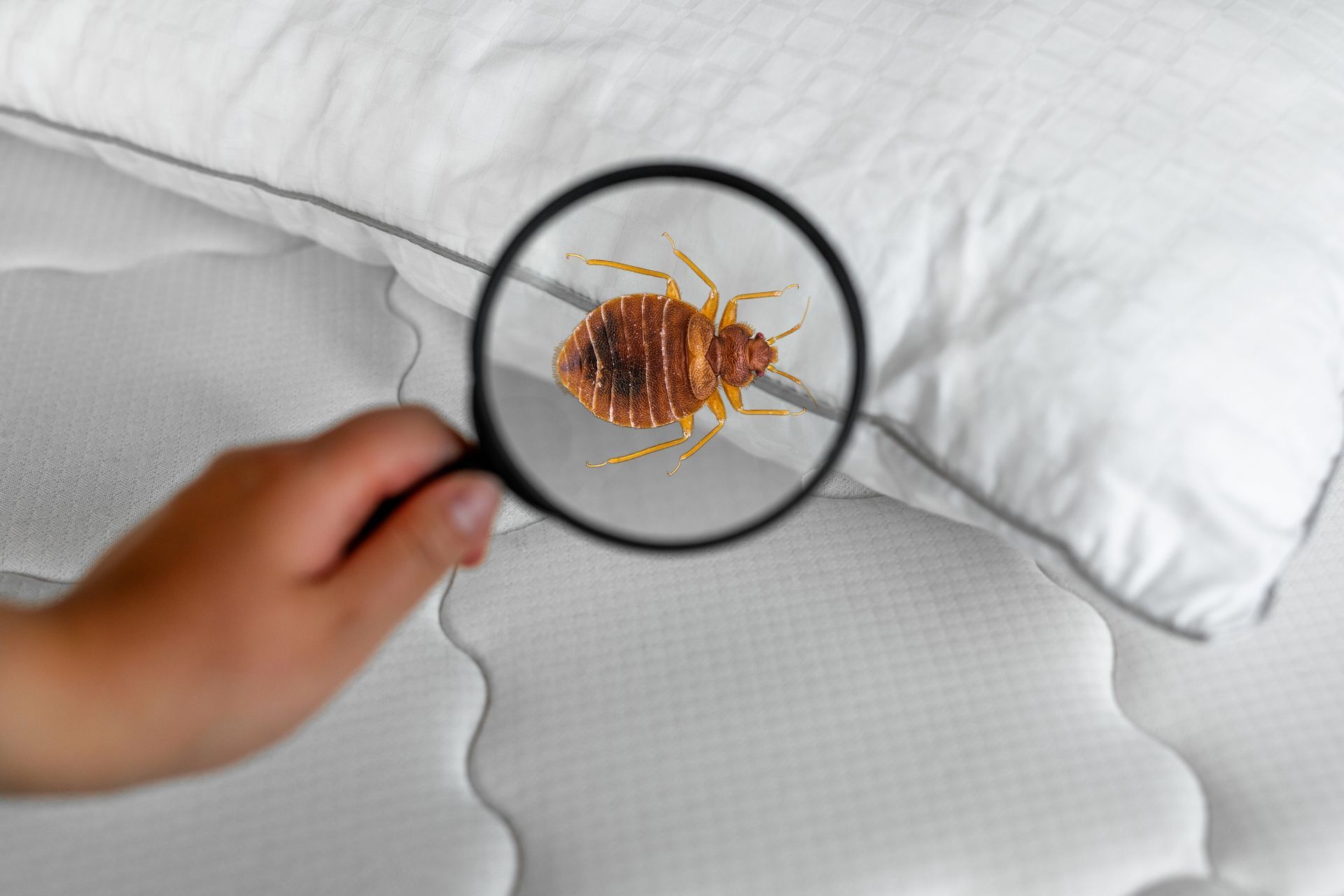Identifying Bed Bugs:
Measuring in at 1/5th of an inch, these pests are flat, oval-shaped, and rusty brown in color. Some say they are comparable to apple seeds in size and appearance. Once engorged with blood, however, bed bugs can swell up to 3 times their usual size, and change in color to a dark red, making them appear to be a different bug altogether.
The Cimicidae family is made up of a number of unappealing parasites, such as the bat bug, the chimney swift bug, and the swallow bug. The bed bug, however, is the most common invader of human homes and beds. These blood-suckers are not very picky about the source of their food (many can be found on birds, bats, and mice), but they all prefer human hosts if given the option.

Bed bugs are usually carried into the home via clothing, luggage, furniture, and bedding. They often hide in cracks, electrical outlets, baseboards, behind wallpaper and picture frames, and - of course - in mattresses and bedding materials. Bed Bug bites result in small, red, itchy sores, which can become swollen or even infected from scratching.
Bed Bug Life Cycle:
A mature, female bed bug can lay between 1 - 5 eggs daily, totaling over 200 eggs in her lifetime. The incubation period for the eggs is around 10 days, depending on the temperature (longer if cool). Once hatched, baby bed bugs will immediately seek a blood host, requiring 5 blood feedings in order to reach their full adult size.
Phone: 828-287-3188 | Email: bedbugs@goforthpest.com